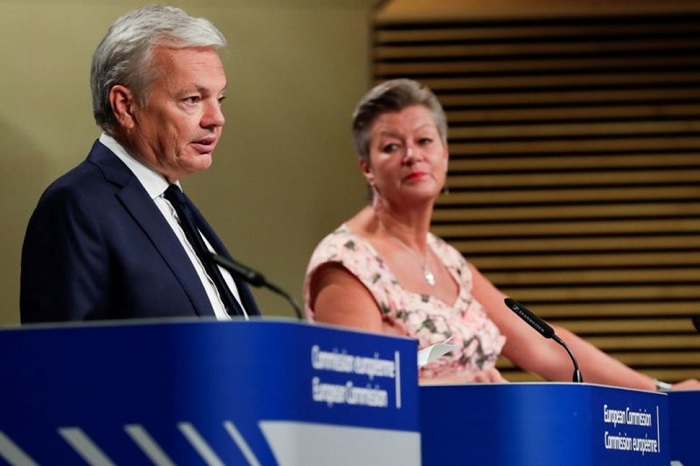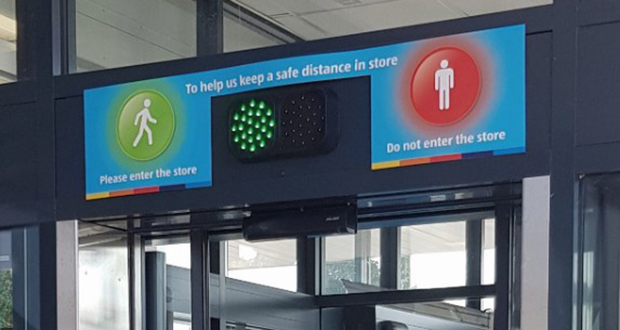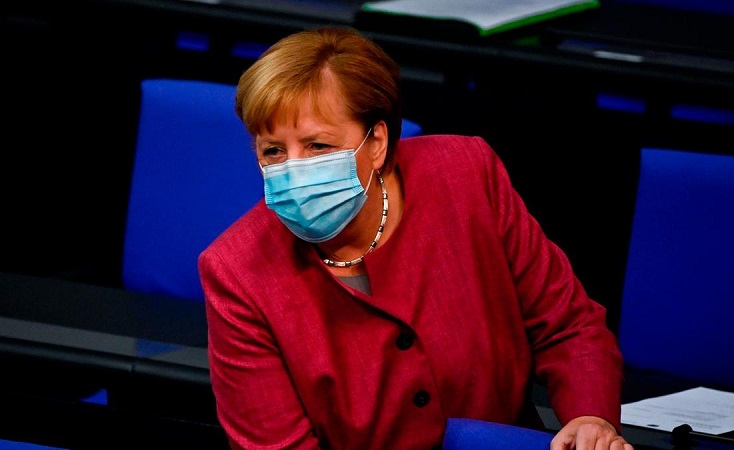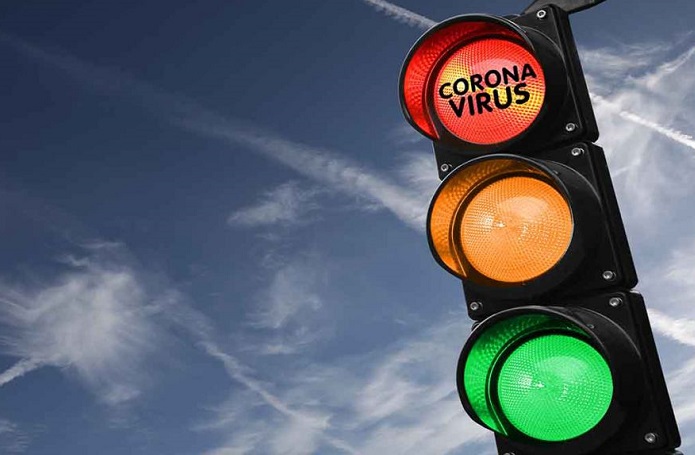Most of the major European countries have waved Code Red as the Covid infections surge uncontrollably. Colour-coded or graded systems that were designed to produce flexible lockdowns in large European countries are flashing red for stop as the rate of infections spikes in cities and towns across the continent.
Berlin city state trialled a traffic light system for its local infection controls earlier this year. The limitations of the system were exposed as the infection rate broke through the red light level to 51 per 100,000.
After a summit with the leaders of 11 major cities on Friday, Angela Merkel announced new emergency restrictions for Berlin and other hotspots. The eight-point plan will see teams from the German army and infectious diseases body the Robert Koch Institute deployed to address the outbreak. A full-scale lockdown is possible if the rate does not go into reverse with two weeks.

“The whole symbol of a traffic light with green, amber and red does not fit in with the times,” said Karl Lauterbach, a health spokesman for the country’s Social Democratic Party.
With a patchwork of varying restrictive measures across the UK, the British government also said last week it would adopt a new tiered system. The mayor of London, Sadiq Khan, warned the new rules could see Europe’s largest city forced into a shutdown to match those in the north of England and Scotland. “We are at a very serious tipping point. The virus is accelerating in every part of London”, said Mr Khan last week.
Meanwhile more French cities went into tightened lockdowns as the government activated emergency measures for Paris hospitals amid a surge in coronavirus patients. Lyon, Lille, Saint-Etienne and Grenoble will go into lockdown on Saturday with stricter controls on restaurants, cinemas and museums, while exhibition centres will be closed.

This consolidates the variety of actions taken by various major European countries to contain the virus spread:
Germany
Germany brought in its traffic light system in Berlin in May. If there are below 20 infections per 100,000 inhabitants within seven days it stays at green, if it goes over 20 then it turns yellow. If there are 30 new infections per 100,000 it goes red. If the reproduction rate is 1.1 on at least three consecutive days, the traffic light turns yellow and at a rate of 1.3, it turns red If 15 per cent of intensive care beds host Covid patients, its yellow and at 25 per cent it turns red. If two of the three above indicators turn red, reinstatement of lockdown measures is likely.
Britain
The government has brought in local lockdown measures in addition to the nationwide restrictions already in place. It is expected to introduce the traffic light system in the coming days in England. Alert Level 1 reflects the current situation with a “rule of six”-only gatherings, wearing face masks, a 10pm bar and restaurant curfew, and just 15 people allowed at a wedding and 30 at a funeral.
At Level 2, people must not meet anyone outside their household bubble. It will be introduced with a rise in transmission, “which cannot be contained through local response”.

Alert level 3, or Red Alert, will have the toughest local restrictions to date. No social contact allowed outside of the household, closure of pubs, restaurant and leisure outlets, no sports. Places of worship remain open.
France
The French Health Ministry uses a four-stage alert of pink, red, dark red and grey which stand for alert, heightened alert, maximum alert and state of emergency. ‘Alert’ is an infection rate of 50 cases per 100,000 people. Local authorities are encouraged but not forced to put restrictions in place. ‘Heightened alert’ is an infection rate above 150 cases per 100,000 in which the authorities must enforce measures such as 10pm bar closures.
‘Maximum alert’ is 250 cases per 100,000 or when 30 per cent of intensive care beds host Covid patients. All bars must close for at least two weeks. Cinemas, museums and theatres will be exempt with sufficient hygiene protection. State of emergency is full lockdown.
Spain
A traffic alert system was adopted in July. However, it was not associated with any measures to stop the spread. Instead, the system gives the government an overall picture of the national situation. In the event, the second Covid wave burnt through all three levels so fast that they were largely redundant. The level stayed at green if the seven-day incidence rate was under 10 cases per 100,000 people. Between 10 and 20 it was yellow and over 30 it went red.




![The Top & Most Popular Seafood Bucket Restaurants in Dubai for you [Never Miss]](https://uae24x7.com/wp-content/uploads/2020/09/8-seafood-in-a-bucket-scaled-e1600739237403.jpg)
![Procedures for Renewing the Driving License in Abu Dhabi [3 Simple Steps]](https://uae24x7.com/wp-content/uploads/2020/07/Capture-9-e1595666454466.jpg)





